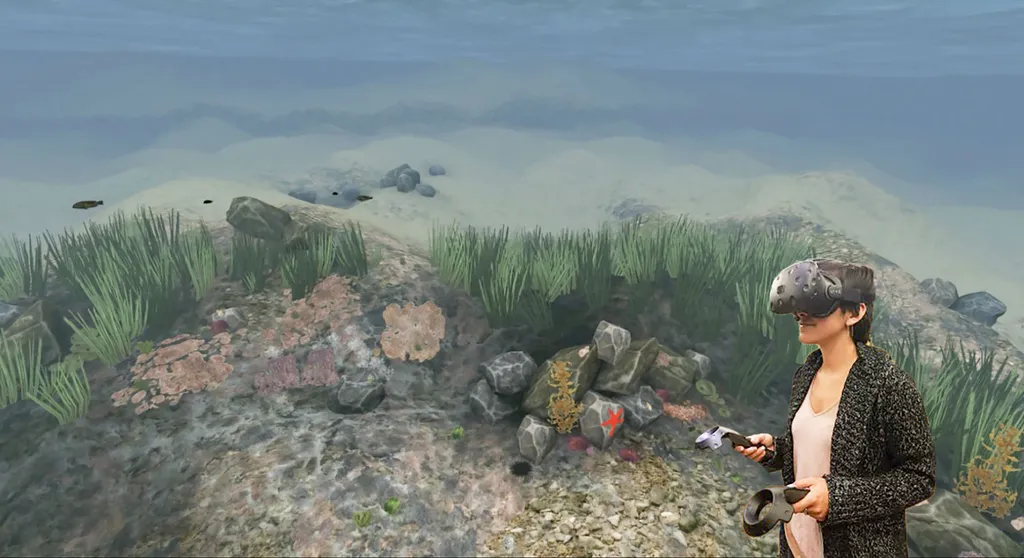Often, shock value is crucial when inspiring people to act. The dangers of climate change are a difficult reality to get people behind because of its far-reaching effects that may not even surface during our own lifetimes, but Stanford researchers are utilizing virtual reality to spread carbon dioxide emission awareness. The Stanford Ocean Acidification Experience, available now for free on Steam, can take users underwater, show our coral reefs as they are now, and then take you forward to the end of the century to see what happens if we continue emitting carbon dioxide as we currently do.
Available on HTC Vive, the Stanford Ocean Acidification Experience doesn’t start in the water. Users can get a better understanding of how emissions affect our water by standing in traffic and following carbon dioxide molecules from cars to the sea. From that point, you’re guided by a narrator as you’re encouraged to note the changes to marine life over time.
“You’re not watching something, you’re doing it,” said communication Professor Jeremy Bailenson. “You learn by doing. These are magic, teachable moments.”
Often, shock value is crucial when inspiring people to act. On October 11th, 2016, a writer for OutsideOnline.com published an obituary for the Great Barrier Reef in Australia, explaining how humanity’s habits had killed it by way of climate emissions and acidification. The obituary went viral, although it was a bit fabricated. The Reef is not dead but is indeed dying and the viral event serves as a call to action. Hopefully, Stanford’s educational tool will be similarly inspiring when it comes to helping our ecosystems.
The Stanford Ocean Acidification Experience was developed by Professor Jeremy Bailenson and his Virtual Human Interaction Lab in collaboration with marine biologists Fiorenza Micheli and Kristy Kroeker. They also had help from Roy Pea, a professor at Stanford Graduate School of Education.




























